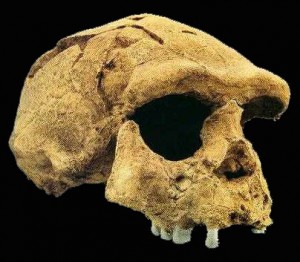The bones of Zhoukoudian Homo erectus, commonly known as ‘Peking Man’, may be 200,000 years older than previously thought, according to a new dating analysis to be published in this week’s Nature (12 Mar 09).
The research indicates that early hominins lived in the region throughout glacial and interglacial periods, and may have implications for our understanding of when migration occurred into Asia.
We asked scientists to put this research in the context of our understanding of human evolution and migration.
Prof David Penny, Professor of Theoretical Biology, Allan Wilson Centre, Massey University
“This research certainly supports the knowledge that early humans spread out from Africa and into Asia and Europe pretty early – getting to nothern China 800,000 years ago fits in with that.
“The timing is good, and is in agreement with even older dates from parts of more western parts of Asia. These very early humans appear to eventually be replaced by an intermediate group of humans (that included the Neanderthals), and then later again modern humans left Africa, eventually spreading Australia, the Americas, and finally to Aotearoa New Zealand.“
Prof Glen Summerhayes, Head of Department – Anthropology, Gender and Sociology, University of Otago
“The recent re-dating of the earliest presence of Homo erectus at Zhoukoudian, China, to 0.77+0.08 million years is a breakthrough in our understanding of this regions past. By using cosmogenic 26AL/10Be analysis on quartz sand sediments and artefacts, Shen and his team have pushed back the presence of Homo erectus in China by 200-300,000 years. This new age is not surprising knowing the much earlier presence of Homo erectus in other parts of the world. Yet, as the authors note, a reliable chronology of H. erectus in Asia is crucial answering questions about the nature and timing of their spread from Africa. This new date is important in filling in the gap, in particular when they note that this early presence of H.erectus occurred during a milder and drier period of time. This new data makes a difference.
“Furthermore the use of this dating technique is testimony to the major contributions that science can make towards paleoanthropology and archaeology.”
